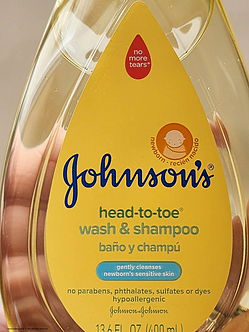
We Love Prairie Dogs
We Love Prairie Dogs
Bathing Your Prairie Dog - Best Practices and Considerations
© 2023 by Gena Seaberg, Ph.D., All Rights Reserved
Bathing Your Prairie Dog - Best Practices and Considerations
© 2023 by Gena Seaberg, Ph.D., All Rights Reserved
Captive pet prairie dogs, if maintained in proper habitat conditions and nutrition rations for hay, treats, and protein for long lifespan as prescribed on this website, should RARELY ever need to be bathed and should have little to no odor if kept under recommended guidelines. Bathing should be avoided unless it becomes absolutely necessary in cases where their coats are matted or sticky with urine, diarrhea or other matter that is negatively impacting their skin and health.
Why should bathing be a rare occurrence?
Due to prairie dog’s dietary needs in both captive and wild settings, where those in the wild are predominantly eating prairie grasses, and those in captivity are ideally replicating that diet with high timothy hay intake (or other grass hay) to aid in long lifespan, this species does not eat many things that contain oils and fats.
Bathing frequently quickly strips their skin and fur of natural oils and should be avoided. For health reasons, PLEASE DO NOT COMPENSATE by feeding them items or applying topical products that contain extra oils, fats, or potentially toxic ingredients for this species if they are ingested through their grooming habits to make up for lack of bathing.
Compensating with non-recommended items in their diet containing high oil and fat content will often, over time, lead to long-term health problems such as fatty, oily sebaceous cysts, other health concerns related to their heart, and more. Topical products also can clog pores or cause other skin conditions from crutching on interventions that impede their body’s natural ability to work for itself.
Baths should be administered a couple of times per year at most and ONLY if absolutely necessary, as mentioned above, or in the case of trying to flush out a potential flea (see the flea and parasite treatment and prevention page of this website).
You also have the option of periodically giving them a quick lightly applied wipe down/patting (without rubbing their skin due to the above) without a bath with an unscented, sensitive-skin baby wipe or a clean, warm, damp washcloth, again patting but not rubbing. Please keep this practice to a minimum.
If using an unscented, sensitive-skin baby wipe, a recommended one might be something like what is shown and linked here:

Product link:https://a.co/d/btAMzX
If a bath has become absolutely necessary or is performed once or twice a year maximum – an instructional video follows below.
For the least stress to them, have everything prepared and ready in advance BEFORE touching your prairie dog!
Have everything prepared and next to your kitchen sink before starting the bath to minimize stress to the prairie dog.
Use a very mild infant/baby shampoo for sensitive skin. When giving a bath, caretakers should ensure the room is warm (about 21° C, 70-72° F) and is draft-free. Have two warmed towels from the dryer ready, one for immediate drying and another placed in a pet carrier next to the sink with its door open to receive them in order for them to finish drying themselves completely.


Wet the prairie dog being careful to avoid their eyes, nose, ears, and face overall. After wetting the prairie dog, apply the shampoo and form a lather, concentrating on the groin, armpits, chest, stomach, back, butt, limbs, and around the base of the tail.

Once these areas have been washed, use the small stream of fresh warm water from the faucet to rinse the shampoo entirely from their fur and begin to dry them, first using the warmed towel next to you, then place them in the crate with the other warmed towel to finish drying themselves.
If habitat and environment are correctly managed and kept clean, coupled with proper diet rations and nutrition over their lifespan, baths should be a rare occurrence. Your prairie dog will be grateful that’s the case as their grooming alone should cover most issues, and smell should be minimal if fed and housed right. If you’re experiencing odors after following these guidelines, please contact us for further assistance to determine what may be causing your situation.
A WORD OF CAUTION - DO NOT USE DAWN DISH SOAP WITH THIS SPECIES!
The use of DAWN dish soap should be AVOIDED with prairie dogs and RGS when bathing them. Why? What is the number one thing this brand is famous for doing? Combating oil and grease! If one remembers the first use of this product with animals, it was for extreme oil spill cases in the Gulf of Mexico, where the petroleum product was killing many species of animals due to suffocation from being entirely coated in oil. Dawn is a very extreme cleaning agent used to break through tough grease; its extreme nature is far too excessive for use in species that are herbivores and eat grass-based diets that don’t produce a lot of natural emollients to the skin. Dawn will completely strip all essential oils from your prairie dogs’ or RGS’s skin and coat. This is why milder, sensitive-skin infant/baby shampoos are recommended instead, and not using something so powerful that can have a more significant negative impact on skin and coat, causing additional issues for your pet.
While this product has been used and recommended by many wildlife rehabbers over the years, it may be acceptable in some species where oils and fats are highly prevalent in daily diet, but it causes a host of issues in those species that are grass-based in their nutrition and digestive tract processes.
Below is an instructional video to help review the above. We thank our friend, Archie, for being such a good sport for this video!